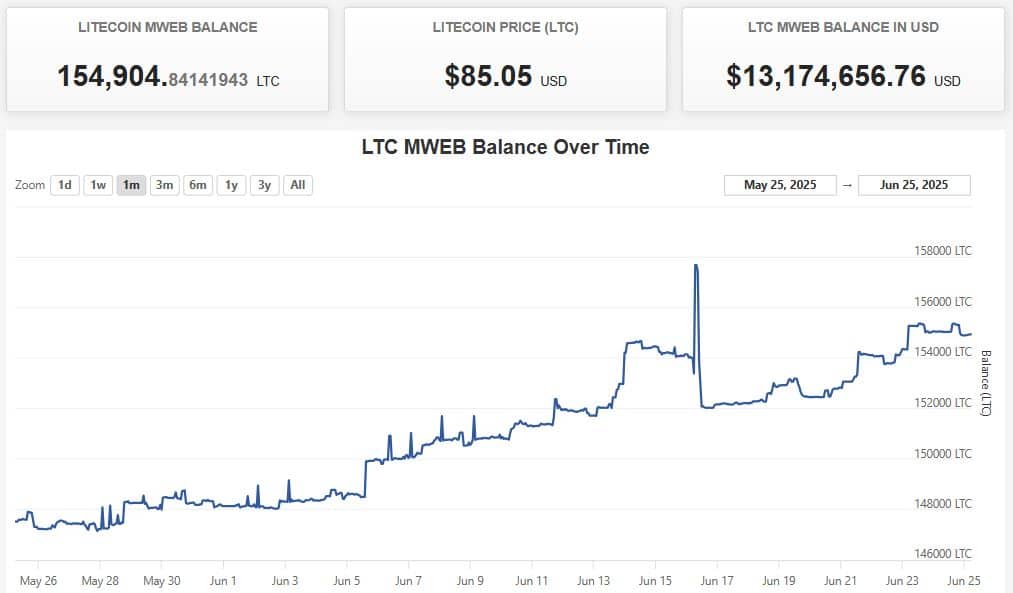Litecoin’s Privacy Breakthrough: MWEB Shatters Records with 150K LTC Locked
Litecoin's MimbleWimble Extension Blocks (MWEB) just hit a major milestone—150,000 LTC locked in its privacy layer. That's not just a number; it's a middle finger to transparent ledger purists.
Why it matters: Privacy coins face relentless regulatory heat, but MWEB's growth suggests users still crave financial opacity. Take that, surveillance-happy bureaucrats.
The irony? While TradFi institutions lecture about 'transparency,' their off-balance-sheet vehicles could house a small galaxy. But sure, let's scrutinize grandma's private LTC transactions.
Bottom line: MWEB's traction proves privacy remains crypto's killer feature—no matter how hard legacy finance tries to neuter it.
 Source: Litecoin MWEB
Source: Litecoin MWEB
Analysts note a compounding effect: the bigger the pool of coins in MWEB, the harder it becomes to match deposits and withdrawals, which drives fresh interest from privacy-conscious holders.
Litecoin’s MWEB takes a balanced approach to privacy. Unlike Monero, which hides everything by default, and Zcash, which offers optional privacy but uses more data, MWEB keeps privacy optional and lightweight, making it practical for everyday use.
Wallet support for MWEB is growing. CAKE Wallet added it in October 2024, enabling private transactions on mobile. Litecoin Core supports it from version 0.21.3, while Electrum LTC offers privacy features like coin control for desktop users without needing to run a full node.
Industry observers say the success of MWEB is reshaping perceptions of the veteran network once tagged as a testnet for Bitcoin. With low fees, fast confirmation and now an opt-in privacy layer, Litecoin is positioning itself as a practical medium of exchange rather than a mere staging ground for other chains’ innovations.
Litecoin is fast and cheap to use. It already has privacy via MWEB.
LitVM is bringing the programmable LAYER to Litecoin.
So LTC will have it all soon.
Further developments are already on the drawing board. LitVM, an EVM-compatible project, is building a smart-contract layer designed to LINK Litecoin to DeFi, NFTs, and Polygon’s AggLayer liquidity network, an expansion that could broaden the asset’s use case beyond payments.
For now, however, MWEB’s rapid uptake is the headline act, suggesting that privacy and scalability can coexist without compromising Litecoin’s open-network ethos.
If current trends hold, MWEB may prove pivotal not just for Litecoin but for the wider debate over how public-ledger systems balance transparency with the individual right to financial privacy.
Also Read: Litecoin Gains EU Approval with MiCAR WHITE Paper


